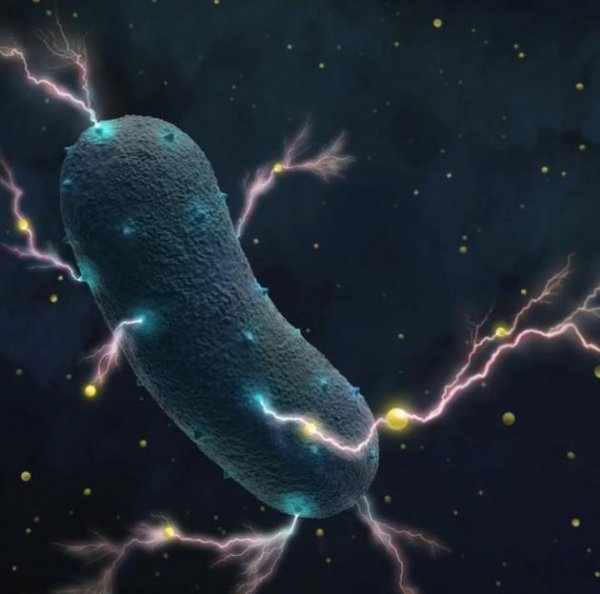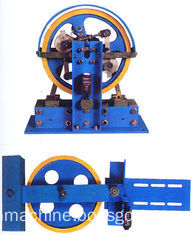Human intestinal bacteria can "power": the main purpose is to produce energy
Beijing time, September 19th, according to foreign media reports, at present, the latest research by scientists shows that human intestinal bacteria can "generate electricity." The research report was published in the recently published "Nature" magazine. Daniel Portnoy, a research report co-author and microbiologist at the University of California, Berkeley, said that generating bacteria is not a new concept and can be found in environments far from human life, such as the bottom of lakes.

But scientists did not know that bacteria in rotting plants or mammals could generate electricity in a simpler way, especially farm animals. In the laboratory, Portnoir and the research team first cultivated a batch of Listeria monocytogenes, which is easily swallowed by people in their daily diet, which infects Listeriosis. This food poisoning is most dangerous for the immune system, pregnant women (which may cause miscarriages), newborns and the elderly.
By placing Listeria monocytogenes in an electrification chamber and using wires or electrodes to capture the generated electrons, the research team found that these food-borne bacteria can produce electricity.
Why is this discovery surprising?
Portnoy pointed out that there are several reasons why some bacteria produce electricity, for example: to remove the electrons produced by the metabolic process, but the main purpose is to produce energy.
The first author of the study, Sam Light, a postdoctoral researcher at the University of California, Berkeley, said: "But Listeria monocytogenes also has other ways to produce energy, such as through the use of oxygen."
Such power generation processes may be "backup systems used under certain conditions", for example: they may start the power generation function under intestinal hypoxia.
The researchers screened mutant bacteria (those with missing or altered genes) to determine which genes are necessary for the bacteria to produce electrical energy. These genes, in turn, encode certain proteins, and these proteins are a key factor in generating electricity.
They found that the power generation system (a chain of proteins that carry electrons away from the bacteria) used by this bacterium is simpler than the power generation system used by other electro-induced bacteria (such as bacteria living on the bottom of a lake).
Previously, most power generation systems were found in Gram-negative bacteria, or their cell walls were composed of two layers, thus isolating the bacteria from the external environment. The bacteria the researchers recently analyzed were Gram-positive, meaning they had only one layer of cell walls, and there was one less barrier to electrons being released.
But when the electrons reach the outside of the bacteria, it is not clear where the electrons will flow. Other call bacteria usually transfer electrons to minerals such as iron or manganese in the external environment. In the research team's experiment, electrons will flow into the electrode, and many different molecules in the gut, such as iron, may combine and accept electrons.
At the same time, the researchers found that these call bacteria require the flavin protein to survive, which is a variant of vitamin B2 and is abundant in the intestine. Researchers later discovered that not only does the bacterium need flavin to survive, but the freely floating flavin in the surrounding environment can enhance the bacteria's power-generating activity.
Power generating bacteria
Once the research team knows which genes are responsible for power generation, they will use a similar process to further identify hundreds of power-generating bacteria, usually some bacteria are present in the gut, while other bacteria play an important role in cheese fermentation or as a probiotic.
Microbiologists Laty Cahoon and Nancy Freitag of the University of Illinois did not participate in this study. They pointed out that considering that bacteria may be in a highly charged environment in our intestines Survival, this latest power generation method may help design bacteria-based energy generation technology.
Wright said that researchers have developed microbial fuel cells, or batteries that use bacteria to generate electricity from organic matter, just like a waste treatment plant. Because this latest process is relatively simple, it is possible to make improvements, but it is too early to conclude.
Wright is more interested in knowing what is going on in the gut-which molecules get electrons from bacteria, and how this process affects the survival of bacteria.
Elevator Speed Governor
- Elevator Rope Governor
- Elevator Speed Governor
- elevator governor
- lift overspeed governor
- elevator speed limiter
- Tension force: 500N≤L<3900N
product
- Bellow-Installed Elevator Speed Governor , Lift Speed Limited for Safety
- Wire Rope Elevator Speed Governor For Two-way Safety Gear , PB276
- Machine Roomless Elevator Speed Governor , 0.5m/s - 1.75m/s PB208
- Elevator Speed Governor ,0.25m/s - 2.5m/s Wire Rope PB56
- Elevator Speed Governor , Safety Device , PB73.3


Elevator Speed Governor, Elevator Speed Governor System, Elevator Speed Limiter
Ningbo Xinda Elevator Traction Technology Co., Ltd. , https://www.xinda-elevator.com